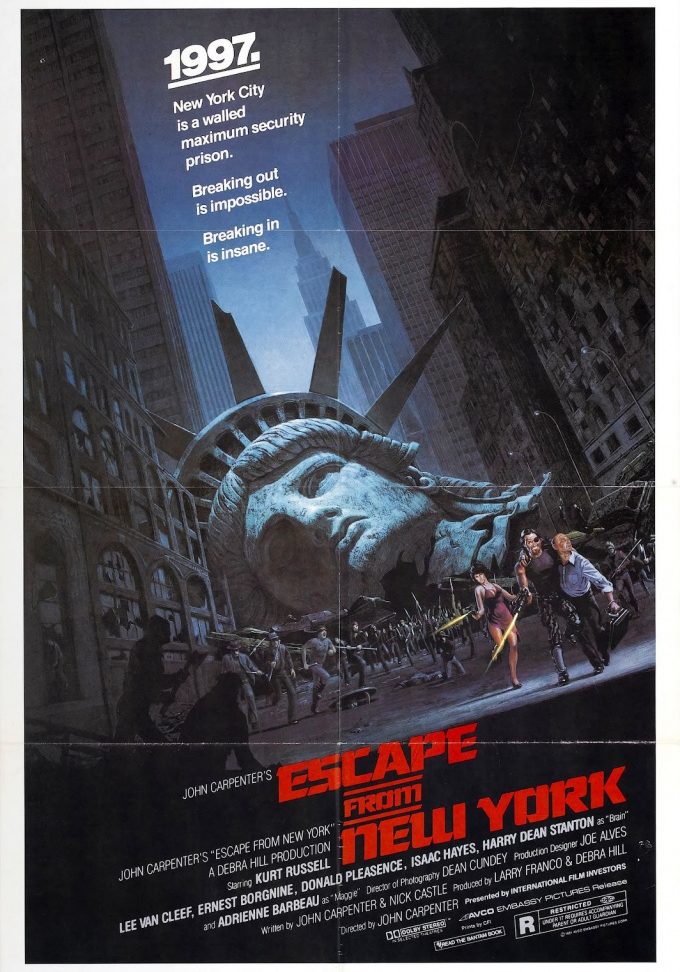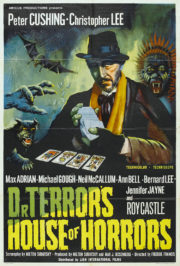The Creeping Dread of a Dystopian Labyrinth
Imagine a world where Manhattan Island has been transformed into a maximum-security prison, and the president of the United States crash-lands into this concrete jungle of convicts. This is the backbone of John Carpenter’s 1981 dystopian thriller, Escape from New York. From the onset, the film hooks viewers with its high-stakes premise and its iconic antihero, Snake Plissken, portrayed with gruff charisma by Kurt Russell. In a future where chaos reigns within the barricaded borough, Plissken’s mission to rescue the imperiled president is as treacherous as it is thrilling, providing a gritty, action-packed journey devoid of true horror elements but rich in atmospheric tension.
Unsettling Visions of Tomorrow
The essence of the film’s fear factor lies not in typical horror tropes but in its dystopian setting and the palpable sense of anarchy it evokes. The darkness of the island, lit only by the flickering fires and sparse streetlights, cultivates a sense of foreboding. Carpenter’s skill in framing each shot to maximize the discomfort of the unknown builds a persistent tension; narrow alleyways and the decaying urban landscape become characters in their own right.
Cinematography harnesses this bleak future with aplomb. Dean Cundey, the director of photography, employs a muted color palette that emphasizes the desolation of the city-turned-prison. Camera angles are often claustrophobic, hemming the audience in with the characters, while the occasional wide shot of the sprawling decay underlines our protagonists’ isolation. Special effects are used sparingly, lending a more realistic and grounded quality to the visuals.
Sounds of Silence and Sirens
Carpenter, doubling as a composer, underscores his visual narrative with a minimalist synth soundtrack that slips beneath your skin. The repetitive motifs mirror the inescapability of the island’s confines, while the smart use of silence ramps up the intensity of certain scenes, allowing the ambient noise of a desolate New York to unsettle the viewer.
When it comes to performance, Russell’s Snake Plissken stands out as a beacon of stoicism amid the chaos. While other characters might fit snugly in over-the-top action films, their responses to terror are more subdued and, therefore, more believable. The cast captures the feel of fending off desperation with their haunted eyes and rough demeanors, feeding into the horror of the situation without resorting to melodrama.
Challenging the Conventions
Although Escape from New York leans heavily into the action-adventure genre, its horror elements are woven into the fabric of its world-building and atmosphere rather than explicit scares. The film utilizes psychological distress and a looming threat to incite fear. The result isn’t a reliance on gore or jump scares but rather on the idea of an irredeemable world just outside the walls of what was once civil society.
Beneath its surface narrative, the film touches upon themes of freedom, systemic failure, and the very nature of criminality. In a way, the island of Manhattan is a microcosm for society’s willingness to cast out and forget those it deems lost causes. These themes resonate with the viewer, adding depth to the visceral experience of the film.
A Dystopian Thrill Not to be Missed
Despite being categorized as a sci-fi action film, Escape from New York appeals to horror enthusiasts with its intense, oppressive atmosphere and bleak outlook on humanity’s future. It’s an experiential ride filled with unease rather than overt frights, appealing to those who enjoy atmospheric thrills over conventional horror fare.
When juxtaposed with classic horror or even Carpenter’s own horror oeuvre like Halloween, Escape from New York might seem a genre outlier. Still, it perfectly embodies the fear of the unknown and societal breakdown that forms the backbone of many beloved horror classics.
In the final frame, Carpenter’s film stands out as a testament to the power of atmosphere and setting in eliciting fear, albeit in a less traditional sense. It toes the line between action and horror, serving both genres with iconic characters and an unforgettable journey. For fans of dystopian settings and tense, atmospheric storytelling, Escape from New York is an essential watch. As for warnings, while less gory than other films of the era, it still contains violence and mature themes, as expected in a world where society’s rules no longer apply.




